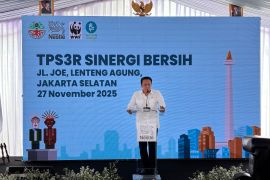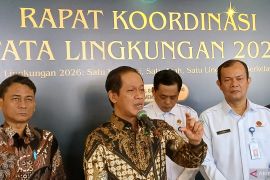The cooperation between BRIN’s Environment and Clean Technology Research Center (PRLTB) and ISTN's Civil Engineering and Planning Faculty is expected to result in collaborative research activities that produce beneficial technology and support the implementation of the universities' three obligations, head of BRIN's PRLTB, Sasa Sofyan Munawar, said in a statement released on Wednesday.
It is also expected to help develop science and technology in the environment and clean technology sector, which can help improve people's living standards, he added.
As part of the collaborative research, there will be funding schemes that could be utilized for research, human resources, scientific and technological development, as well as research and innovation culture creation, he informed.
Through the collaboration, the university will be able to access research and innovation facilities at BRIN openly.
BRIN's PRLTB has research capacity and facilities as well as human resources with expertise in chemistry, environment, industry, oil, and clean technology.
Related news: BRIN, UGM develop Biomedical Scaffold Research Collaboration Center
The collaboration is also expected to encourage the development and utilization of scientific products based on development priorities.
Moreover, it is expected to improve the implementation of science and technology to strengthen the quality of the environment, build disaster resiliency, and address climate vulnerability.
PRLTB conducts research activities such as environmental evaluations to optimize the sustainable usage of space and resources.
It also carries out environment quality monitoring and pollution handling, including with the help of technology, to process clean water, drinking water, waste, and sea pollution, as well as reduce greenhouse gas emissions.
Meanwhile, the dean of ISTN's Civil Engineering and Planning Faculty, Lely Mustika, said that through collaboration with strategic partners such as BRIN, the university can utilize opportunities to improve research activities.
"Opportunities that can be utilized by universities such as donation, funding, and research collaboration can only be accessed if universities have partners, whether they are non-governmental organizations, research organizations, and industry," she explained.
Related news: BRIN develops virus-like particle to make vaccines
Related news: BRIN bolsters data gathering infrastructure amid blue economy push
Translator: Martha H S, Fadhli Ruhman
Editor: Suharto
Copyright © ANTARA 2022












